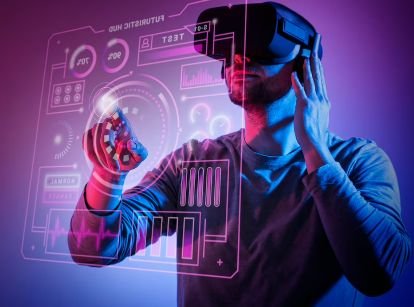Urban Planning Revolution: Reshaping Cities with Virtual Reality 2023

What should the city we live in look like? How do structural changes affect the people who move in it? Cartographers at Ruhr University Bochum are using virtual reality tools to explore these questions before large sums of money are spent on construction measures. Using the Unity3 game engine, they recreate scenarios in 3D where people can experience potential changes through immersion, and were able to demonstrate that the physical response to this experience is measurable.
Building measures that change the urban environment change the environment of both the people who live there permanently and those who visit them temporarily. It is not always possible to predict the effects in advance. In such cases, it helps recreate the environment in a 3D model that people can experience through immersion. To this end, cartographers working with Marc Weißmann use software that was originally designed for programming computer game environments.
“We have developed a laboratory set in which you can virtually simulate the environment, including traffic,” explains Weißmann. Researchers can use it to directly visualize the effects of planned structural changes: How does traffic flow? Do cars and pedestrians get in the way or not?
In addition, the space that surrounds us affects our well-being. Sometimes we notice it, but not always. “People who have lived on a noisy street for a long time, for example, may think they can’t even hear the noise anymore,” says Julian Keil. “But we know that, objectively speaking, residents on such streets experience significantly higher levels of stress than others.”
In order to determine such implicit effects of urban planning measures before a lot of money is poured into them, the cartography team developed a method to measure them in advance. To do this, they programmed an urban environment in virtual reality and let test participants experience the scenarios. At the same time, they measured the skin conductance of the testers, which provides information about their level of stress.
They showed that the higher intensity of traffic on the street clearly upset the testers, as measured by their skin conductance. To confirm their findings, a study is planned that will incorporate more physical measurements that will provide information on participants’ stress levels and various emotions, including heart rate, blood pressure and pupil size.
“Until now, residents and other interested parties have been involved in the planning phase of construction measures, but only in the form of surveys, that is, explicit statements,” says Keil, who deals with psychology. “Our method allows land planners to assess the implicit impacts of possible measures and include them in planning as well.”
Experiments for both studies were conducted in a climate-friendly manner using electricity from a mobile solar system on the roof of the institute building.
More on:

